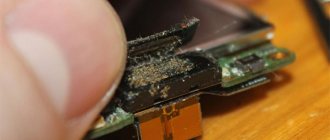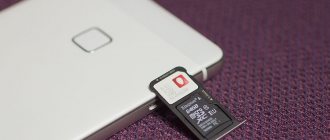Are there too many remote controls for different equipment in your house? Does your hotel or hostel TV have no remote control? You can solve these problems by using the infrared port on your Xiaomi phone. This article will tell you how to do this.
What is IR port
The IR port (infrared port) is a kind of remote control that can be used by almost all modern devices. At the same time, there are no wires, no need to change batteries, and no individual charging is required.
With IrDA you can:
- Turn on/off the TV, change channels, adjust the volume, record programs.
- Change the intensity of the air conditioner and the jet flow.
- Work with a DVD player, camera, portable speakers and even kitchen appliances.
You can forever forget about a bunch of extra remote controls, about the fear of losing them, about faulty or worn-out buttons. Most popular electronics brands are supported, from Samsung to Asus . Thus, remote control will only bring pleasure and comfort.
How to enable IR port on Xiaomi, even if there is no port?
Our children will never know that once upon a time televisions were tube-based, and there was no way to control them remotely. To turn up the volume or change the channel, I had to get up from the couch every time.
Today, there is no need for unnecessary movements; moreover, you can collect all the remote controls for consumer electronics in your smartphone, and put the plastic transmitters in a box and hide it in the closet (or take it out to the balcony).
At this point one could make a remark that in order to implement the function of remote control of household appliances, the smartphone must have an infrared port, but... in fact, this is not entirely true. If there is a 3.5 mm audio jack or at least microUSB, consider the remote control in your pocket.
Where is the infrared port on the phone?
It should be noted right away that IrDA is not present on all Xiaomi smartphones, which we will discuss below. In addition to the official characteristics and settings, you can simply visually determine the presence of a given port, which is much faster.
It is usually located near the headphone output (always at the top of the phone) and looks like a medium-sized black circle. Larger than the headphone compartment, but smaller than the main compartment.
Alternative
If you want to test this technology, but don’t want to purchase a smartphone with an infrared port, there is an alternative. Just buy an infrared transmitter (TV dongle) for the desired device. There are many of these devices, the cost varies between 200-500 rubles.
I think you have encountered the search for a remote control more than once in your life. Probably at these moments you dreamed that you could call this very remote control. So, for those in the tank, a remote control that you can call has already been invented. And perhaps it is in your pocket.
Now there are a huge number of smartphones on the market with a built-in infrared port, and all of them can control almost any equipment. Danya’s article will tell you how the infrared port works and why a smartphone needs it at all.
So, what is an infrared port? From a technical point of view, this interface is usually called IrDA or InfaRed, Data, Association, in fact, this is a group of standards that describe data transfer protocols using the infrared range of light waves as a carrier.
Such radiation is invisible to the human eye, however, it can be easily noticed by any photo or video camera. Those viewers who come from the early 90s should remember in the era of push-button phones, the IR port was actively used for data transfer.
In those distant times, men went to the mammoth in large groups, and women and children were engaged in gathering. Then at night the whole community gathered around the fire and shared ringtones and pictures, placing a couple of phones opposite each other.
The signal, namely infrared radiation, travels very far. You can place two smartphones at a distance of 100 meters and the signal will still go through. The main thing is that the beam from the transmission to the receiver is on the same straight line.
Although the signal travels at the speed of light, the data transfer speed of the infrared port is very low, about 100 KB per second. But in those days, content weighed quite a bit. The infrared port could be found on Nokia, although they had Bluetooth and WI-FI, and even in the presence of such interfaces, the ability to transfer data via the infrared port still remained.
It was at this time that with the advent of smart phones, users had a great opportunity to control any household appliance from their phone. After Android took over the world, WI-FI and Bluetooth protocols finally supplanted the IR port from phones. As a result, the IR port was undeservedly forgotten by manufacturers. However, in 2013, HTC and Samsung released their flagships, Galaxy S4 and HTC One M7, with infrared support.
By that time: TVs, air conditioners, music systems and vacuum cleaners acquired infrared receivers and, accordingly, remote controls, which are constantly lost.
The decision to build an IR port into the phone, in my opinion, is brilliant; a smartphone is always at hand, a modern person does not lose sight of it, even in his sleep. The smartphone can control absolutely any equipment without any problems. But how does it work? First, you need to download the application to your smartphone, they can be downloaded from Google Play, absolutely free. I think the best applications are TV remote, SURE, all of them can be downloaded absolutely free.
But, usually, if you buy a smartphone with an infrared port, the manufacturer equips its device with an application that stores a huge number of presets for a wide variety of equipment.
Xiaomi smartphones with IR port
List updated 04/13/2020.
IrDA is not present in all models, but the list is still extensive and includes both budget and flagship models:
- Redmi Note 2;
- The entire Redmi 3 line;
- The entire Redmi 4 line;
- The entire Redmi 5 line;
- The entire Redmi 6 line;
- Redmi 7, Redmi Note 7, Redmi Note 7 Pro;
- Redmi 8, Redmi Note 8, Redmi Note 8 Pro, Redmi Note 8T;
- Redmi Note 9 Pro, Redmi Note 9 Pro Max.
- Redmi S2;
- Mi 4;
- The entire Mi 5 line;
- Mi 6;
- Mi 9, Mi 9 SE, Mi 9 Pro (5G), Mi 9 TE, Mi 9 Lite;
- Mi 10 5G, Mi 10 Pro 5G;
- Redmi K30, Redmi K30 Pro;
- Mi A1, Mi A2, Mi A2 Lite, Mi A3;
- Mi Max 2, Mi Max 3;
- Mi Note 3, Mi Note 10, Mi Note 10 Pro;
- Pocophone F1, POCO X2.
If your model is not on the list, then it can act as a remote control via a Wi-Fi connection, but it will only be effective in relation to TVs from Mi TV and Mi Box set-top boxes.
Mi Remote - how to use on Xiaomi smartphones
Mi Remote is a stock application in MIUI firmware on Xiaomi smartphones, which allows you to control smart appliances in your home using your phone. It is worth noting here that your smartphone must have an IR port; it is usually located on the top edge and is present in models such as Redmi 3/4, Xiaomi Mi5, Redmi Note 3/4.
Instructions: how to use Mi Remote
First of all, make sure that your phone has an infrared port, and also turn on the Internet on the device (this will allow more brands of equipment to be available). Now go to the folder with system applications and find a blue shortcut with an image of a round white remote control - this is Mi Remote.
Launch this application and click on the “+” icon in the right corner of the screen. Here you will be asked to select the brand of the equipment you are going to operate. Choose, for example, Philips, Supra or some other brand. Now you will be asked to select the type of device: TV, air conditioner, DVD player, etc.
An on/off key will appear on the main screen of the application; you need to point your smartphone at the equipment and press the button. Press until the device turns on/off, this will mean that you have selected the correct settings. Do the same with the other proposed buttons.
That's all, now the compatible equipment in your home is completely controlled using your smartphone. This is such a useful and simple function in MIUI.
Which Xiaomi smartphones have an IR port and support Mi Remote:
- Xiaomi Mi Note 2
- Xiaomi Mi 5s Plus
- Xiaomi Mi 5/Pro
- Xiaomi Mi Max/Prime
- Xiaomi Mi 4S
- Xiaomi Mi 4c
- Xiaomi Mi 4
- Redmi Pro
- Redmi Note 4X
- Redmi Note 4 (MTK & SD)
- Redmi Note 3 (MTK & SD)
- Redmi Note 2
- Redmi 4/Prime
- Redmi 4A
- Redmi 3S/Prime/3X
- Redmi 3/Prime
Source: https://galagram.com/2017/03/how-to-xiaomi-mi-remote/
Setting up the IR port for the first time
Now let’s get down to the most important and basic thing – how exactly to use the “mobile remote control”. To do this, you will need a special application - Mi Remote , which we partially discussed in the article “How to connect Xiaomi to a TV.”
The application is freely available for download on Google Play. Its main advantages :
- Simple and intuitive interface;
- Russian language support.
- Support for a large number of brands.
Let's now start working with the infrared port:
- We go into the application and immediately see a white screen with an orange or blue highlight.
- The software first asks you to select a remote control. This is the device you want to control. Click on the plus.
- A list of available electronics is displayed: TVs, players, fans, set-top boxes, etc. Select what you need.
- Next step: identify the manufacturer . For example, if you need to manage TV from LG, we find this company in the list. The choice is wide: there are both modern titans of the world market, and slightly forgotten companies of yesteryear, which have faded into the background in popularity and sales.
- When all the data is specified, point the port at the projector and first test the buttons, as indicated in the prompts on the screen. If everything was configured correctly, reading the information is successful.
- Now you can use your smartphone as a remote control. All the necessary function buttons are displayed on the phone screen.
- Did not work out? Then we re-enter the data about the equipment in a special window and check it carefully.
Unfortunately, it may be that your electronics simply do not support the ability to be controlled using a Xiaomi device.
Other port management applications
If Mi Remote for some reason refuses to work, then it can be replaced with analogues:
- Remote Control for TV;
- Universal Remote TV;
- Smartphone Remote Control;
- Remote Control Pro;
- Galaxy S4 Universal Remote.
Each of them, with the exception of the last one, has 1 useful addition: they support management of devices that have a Wi-Fi module. Their setup is not much different from that for Mi Remote. Therefore, there are usually no problems when connecting and using it.
To sum it up, infrared is a useful feature that makes managing multiple electronics much easier.
What equipment can be controlled?
Unfortunately, mobile phone manufacturers provide a “cut version” of the infrared port to reduce its size. Therefore, it is only possible to send an infrared beam, but not to receive it.
It turns out that the IR port can be used to control home appliances. But there is one important condition: the remote control with which you control the equipment must be supported by a special application on your smartphone. Thus, purely theoretically, it is possible to control any equipment, but in practice, control requires the support of a remote control. To find out if this remote control is in the database of a special application, you just need to try to find the brand of your equipment and try to establish contact, which is discussed below in the article.
The smartphone can be used to control the following types of equipment:
- TV;
- TV set-top box, tuner, DVD;
- Projector;
- Air conditioner;
- Mi TV, Mi Box;
- Fan;
- AV receiver;
- Camera.
Also read our material about ways to connect Android to a TV.











